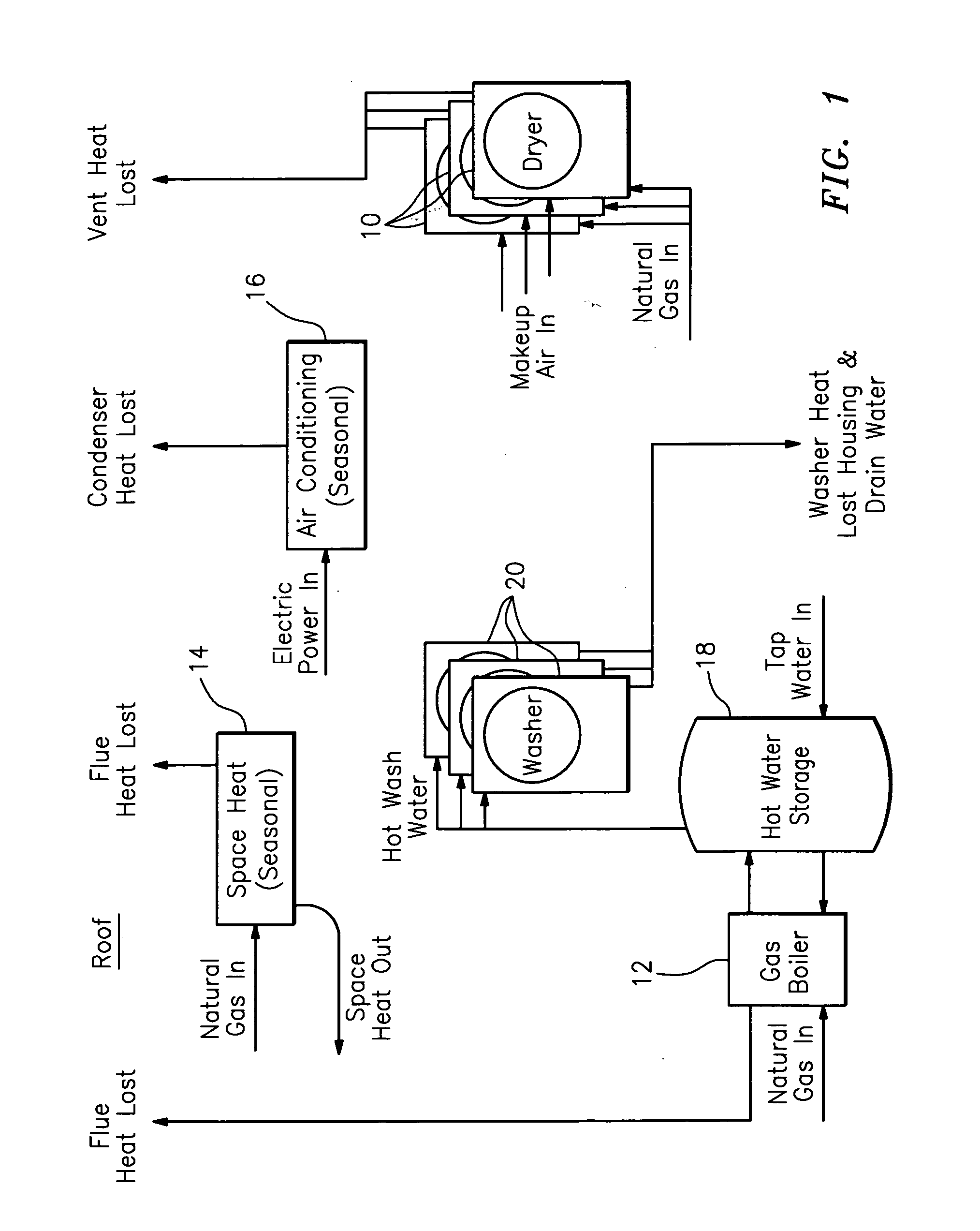Integrated energy recovery systems
a technology of energy recovery and energy recovery, applied in the direction of lighting and heating equipment, process and machine control, instruments, etc., can solve the problems of small portion of a/c waste heat recovery, low domestic hot water consumption, etc., and achieve the effect of reducing waste heat, high water consumption, and material reduction of air conditioning electrical consumption
- Summary
- Abstract
- Description
- Claims
- Application Information
AI Technical Summary
Benefits of technology
Problems solved by technology
Method used
Image
Examples
Embodiment Construction
[0018]In a typical commercial laundry of the vended type as shown in FIG. 1, the key energy consuming processes are the dryers 10,10, washers 20,20 hot water boiler 12, the facility space heating system 14, and the facility air conditioning system 16. Each of these processes consumes significant energy, and discharges waste heat to the atmosphere and / or down the drain. Laundries generally employ a boiler that consumes fuel, typically natural gas or oil, and heats water, which is then stored in a separate tank as at 18. The washers 20, 20 draw on the tank as needed, and when each cycle is completed, the water is discharged, still substantially hot, down the drain. The dryers 10,10 draw ambient air, and consume substantial energy to heat the air to very high temperatures, ranging from 325 F. for 30 lb. dryers, to 550 F. for larger machines. This energy is most commonly supplied as natural gas, although propane and oil fired dryers, as well as electric and steam heated dryers are also ...
PUM
 Login to View More
Login to View More Abstract
Description
Claims
Application Information
 Login to View More
Login to View More - R&D
- Intellectual Property
- Life Sciences
- Materials
- Tech Scout
- Unparalleled Data Quality
- Higher Quality Content
- 60% Fewer Hallucinations
Browse by: Latest US Patents, China's latest patents, Technical Efficacy Thesaurus, Application Domain, Technology Topic, Popular Technical Reports.
© 2025 PatSnap. All rights reserved.Legal|Privacy policy|Modern Slavery Act Transparency Statement|Sitemap|About US| Contact US: help@patsnap.com



